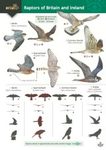![How Fast Can a Falcon Dive? How Fast Can a Falcon Dive?]()
Click to have a closer look
About this book
Contents
Customer reviews
Biography
Related titles
About this book
This book explores the world of raptors in a way that will appeal to bird lovers and biology enthusiasts alike. Ornithologist Peter Capainolo and science writer Carol A. Butler define and classify raptors, explore the physical attributes of birds of prey, view how their bodies work, and explain the social and physical behaviors of these species - how they communicate, hunt, reproduce, and more.
From stories of red-tailed hawks making their homes on the ledges of Manhattan skyscrapers to their role in protecting California's vineyards from flocks of grape-loving starlings, the authors explore how these predators of the sky have adapted to the human world.
Contents
Preface and Acknowledgments Raptor Basics Raptor Bodies Raptor Behavior Raptor Reproduction Dangers and Defenses Taming and Training Raptors and People Research and Conservation References Index
Customer Reviews
Biography
Peter Capainolo is senior scientific assistant in the department of ornithology at the American Museum of Natural History, an adjunct faculty member at the City University of New York, research associate and board member at the Long Island Natural History Museum, and serves on the New York State Falconry Advisory Board.
Carol A. Butler is the coauthor of Salt Marshes: A Natural and Unnatural History, and books within the Rutgers Animal Q&A series including Do Butterflies Bite?, Do Bats Drink Blood?, Do Hummingbirds Hum?, and Why Do Bees Buzz? (all Rutgers University Press).
Popular Science
By: Peter Capainolo and Carol A Butler
218 pages, Col plates, b/w illus
I appreciate that you take an interesting and effective approach to the subject...it should be a great reference.-Frank M. Bond, President, International Association for Falconry & Conservation of Birds of Prey
"Your marvelous little book, How Fast Can a Falcon Dive? arrived. I have read over parts of it and have already learned some stuff...You have succeeded in aupplying some good answers to interesting questions. It's well worth a purchase."-Dr. Clayton M. White, Emeritus Professor of Zoology, Department of Plant and Wildlife Sciences, Brigham Young University
"This new book is a fascinating read, packed full with information that is properly referenced, something that I always like to see in books that are attempting to interpret complex matters for non-specialists."-Robin W. Woods, MBE, Fellow Linnean Society of London



































